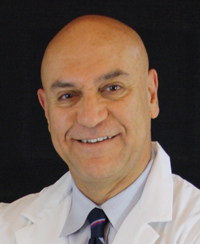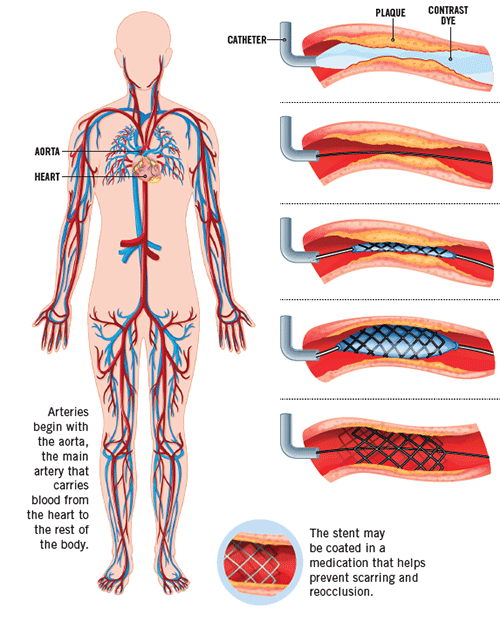
How an advanced procedure allows blood to flow freely to the heart.
A procedure called angioplasty—sometimes referred to as percutaneous (meaning “through the skin”) coronary intervention, or PCI—opens clogged coronary arteries to restore blood flow to the heart. This minimally invasive procedure, which is usually performed in a cardiac catheterization lab, allows treatment of heart attack and chest pain syndromes.

The state of New Jersey recently certified Robert Wood Johnson University Hospital (RWJUH) Hamilton to perform nonemergency, elective angioplasty in addition to emergency angioplasty. Mahmoud Ghusson, MD, a cardiologist at RWJUH Hamilton, explains how a basic balloon angioplasty with stent procedure works:
- A catheter (a small plastic tube) is inserted through the wrist or groin and threaded through an artery toward the heart. Contrast dye is injected so the doctor can see any blockage or plaque buildup.
- The blockage is crossed with a very thin wire that will serve as a rail to deliver the balloons and stents.
- A collapsed balloon holding a stent (a tiny metal mesh tube) is advanced and positioned to cover the blockage.
- The balloon is then inflated, embedding the stent in the vessel wall and collapsing the blockage.
- The balloon is deflated and removed, leaving the stent fully deployed and working like a scaffold to keep the vessel from reoccluding (becoming obstructed).
- The stent may be coated in a medication that helps prevent scarring and reocclusion.
- Some patients stay in the hospital overnight after the procedure; others go home the same day. Moderate-intensity activities can be resumed in a week.

How to Protect Your Heart
Angioplasty can be lifesaving, but healthy practices that keep your heart healthy can help you avoid treatment in the first place or maintain treatment benefits after a procedure. Key steps include:
Make Smart Lifestyle Choices
Get Physical: Aim to exercise each week for at least 150 minutes at moderate intensity or 75 minutes at vigorous intensity (or a combination).
Eat Health Foods: Get a variety of fruits, vegetables, whole grains, low-fat dairy, poultry, fish and nuts. Eat small portions and try to avoid red and processed meats, sugar, salt and saturated fat.
Quit Smoking.
Track Risks: Schedule regular checkups with your doctor to keep tabs on factors like weight, blood pressure, blood sugar, cholesterol, calcium score and sleep quality.
Know the Warning Signs of a Heart Attack
Every 40 seconds, someone in the U.S. has a heart attack. Know what to watch for—and realize that warning signs may be different for a woman than for a man. It’s common for women to experience more subtle angina (chest pain), as well as shortness of breath and upper back pain prior to having a heart attack. Call 911 as soon as you think you or someone you’re with may be having a heart attack.
Typical Warning Signs in Men:
- Squeezing chest pressure or pain
- Jaw, neck or back pain
- Nausea or vomiting
- Shortness of breath
- Indigestion
Typical Warning Signs in Women:
- Chest pain
- Jaw, neck or upper back pain
- Nausea or vomiting
- Shortness of breath
- Pain or pressure in the lower chest or upper abdomen
- Fainting
- Indigestion
Whoever your heart beats for, our hearts beat for you. To connect with a top cardiovascular specialist at Robert Wood Johnson University Hospital Hamilton, call 888-724-7123.